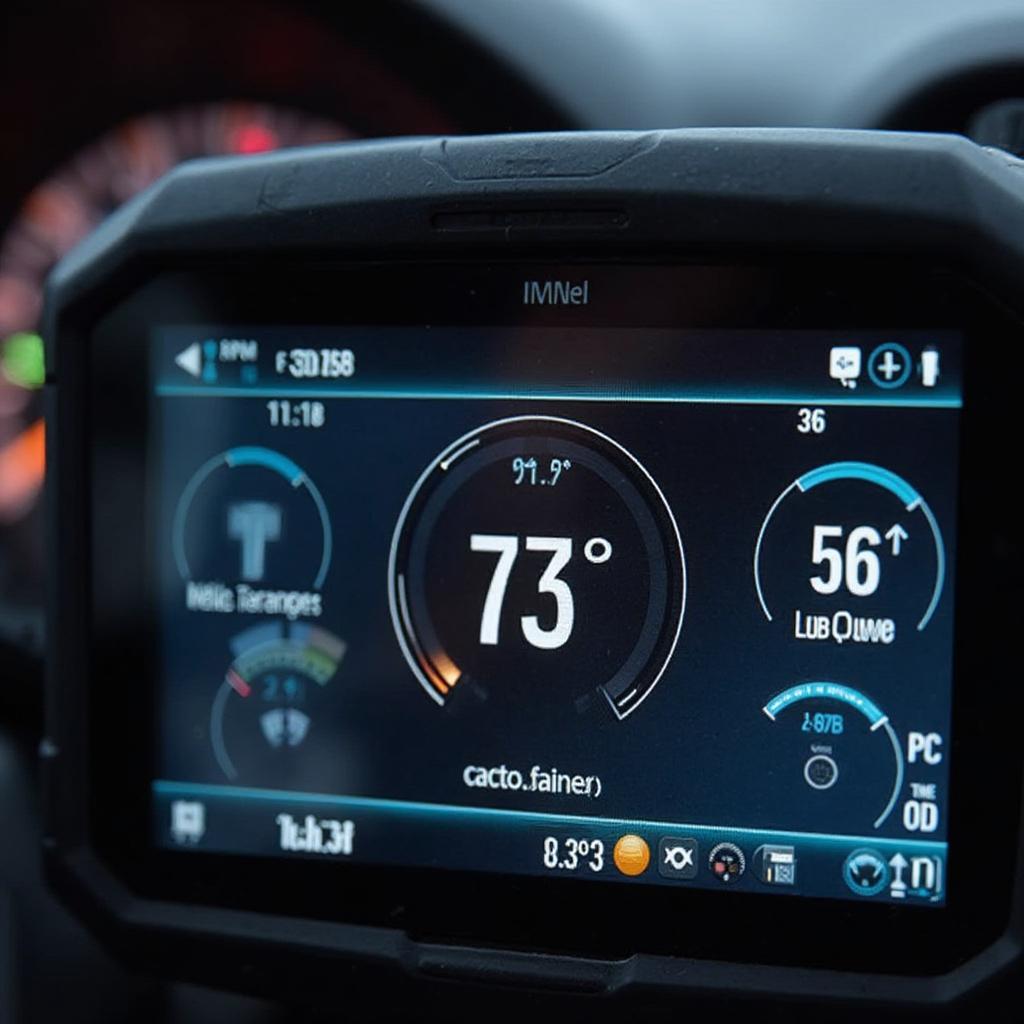Getting a precise reading of your car’s engine temperature is crucial for maintaining optimal performance and preventing costly repairs. Using the OBD2 port for a water temp gauge offers a convenient and accurate solution. This guide explores everything you need to know about utilizing your car’s OBD2 port for engine temperature monitoring. We’ll discuss the benefits, different types of OBD2 temperature gauges, installation, and troubleshooting common issues.
Understanding the Importance of Monitoring Engine Temperature
Overheating can lead to severe engine damage, including warped cylinder heads, cracked engine blocks, and damaged head gaskets. Regularly monitoring your engine temperature allows you to detect potential problems early on and take preventative measures. A water temp gauge connected to your OBD2 port offers real-time temperature data, providing a more accurate and comprehensive view than traditional dashboard gauges.
Benefits of Using an OBD2 Water Temp Gauge
- Accuracy: OBD2 gauges access data directly from the engine’s computer, offering a more precise reading than traditional gauges.
- Early Problem Detection: Real-time monitoring enables you to quickly identify temperature fluctuations and potential overheating issues before they escalate.
- Data Logging: Many OBD2 scanners and apps allow you to log temperature data over time, helping you identify patterns and diagnose intermittent problems.
- Additional Data: Many OBD2 tools offer additional engine data beyond just temperature, such as coolant pressure, RPM, and speed.
Choosing the Right OBD2 Water Temp Gauge for Your Car
Several options are available for monitoring water temperature via the OBD2 port. Selecting the right one depends on your needs and budget.
Types of OBD2 Water Temp Gauges
- Standalone OBD2 Scanners: These dedicated devices plug into your OBD2 port and display various engine parameters, including temperature. They range from basic code readers to advanced diagnostic tools.
- OBD2 Bluetooth Adapters with Smartphone Apps: These adapters connect to your OBD2 port and transmit data wirelessly to a smartphone app. Numerous apps are available offering various features, including temperature monitoring and data logging.
- Dedicated OBD2 Water Temp Gauges: Some aftermarket gauges are specifically designed to monitor water temperature via the OBD2 port and can be integrated into your car’s dashboard.
Choosing between these options depends on your individual requirements. A simple Bluetooth adapter and app might be sufficient for basic monitoring, while a standalone scanner or dedicated gauge may be preferable for more advanced diagnostics and integration. Is an obd2 tool to monitor engine temperature sensor right for you? Let’s delve deeper.
Installing and Using Your OBD2 Water Temp Gauge
Installation is typically straightforward. Locate your car’s OBD2 port, usually under the dashboard on the driver’s side. Plug in your chosen device and follow the manufacturer’s instructions for setup. Medidor de temperatura obd2 is a useful search term for finding these devices.
Troubleshooting Common Issues
- No Data: Ensure the device is properly connected to the OBD2 port and powered on. Check the app or scanner settings if necessary. If your car throws a codigo obd2 po128, it indicates a problem with the cooling system, possibly a stuck thermostat.
- Inaccurate Readings: Double-check the device’s calibration and ensure it’s compatible with your car’s make and model.
- Connection Issues: For Bluetooth adapters, ensure your phone’s Bluetooth is enabled and paired with the adapter.
Conclusion
Using an OBD2 port for a water temp gauge is a valuable tool for any car owner. It provides accurate, real-time temperature monitoring, enabling early detection of potential problems and preventing costly repairs. Whether you choose a standalone scanner, a Bluetooth adapter, or a dedicated gauge, monitoring your car’s water temperature through the OBD2 port is a smart investment in your vehicle’s health and longevity. What obd2 code p0128 chevy means is related to the thermostat and should be checked if you experience this specific code. Could can obd2 p0128 also be a concern? Yes, it’s the same code and indicates a similar issue.
FAQ
- Where is the OBD2 port located in my car? It’s usually under the dashboard on the driver’s side.
- Can I use any OBD2 scanner for temperature monitoring? Most scanners offer temperature readings, but some may have more advanced features.
- What are the signs of engine overheating? Steam from the hood, a temperature gauge reading high, or a sweet smell.
- How often should I check my engine temperature? Regularly monitoring, especially during long trips or hot weather, is recommended.
- What should I do if my engine overheats? Pull over safely, turn off the engine, and let it cool down.
Need help with your car’s diagnostics? Contact us via WhatsApp: +1(641)206-8880, Email: [email protected], or visit us at 789 Elm Street, San Francisco, CA 94102, USA. Our 24/7 customer support team is ready to assist you.


